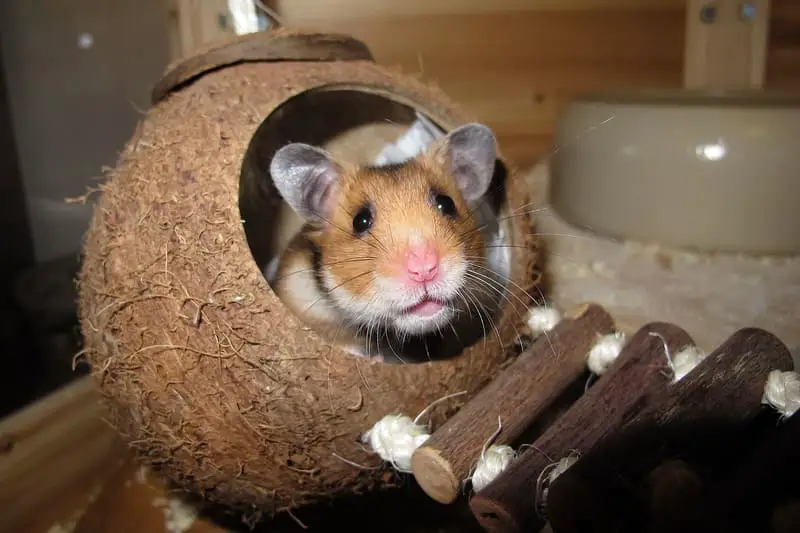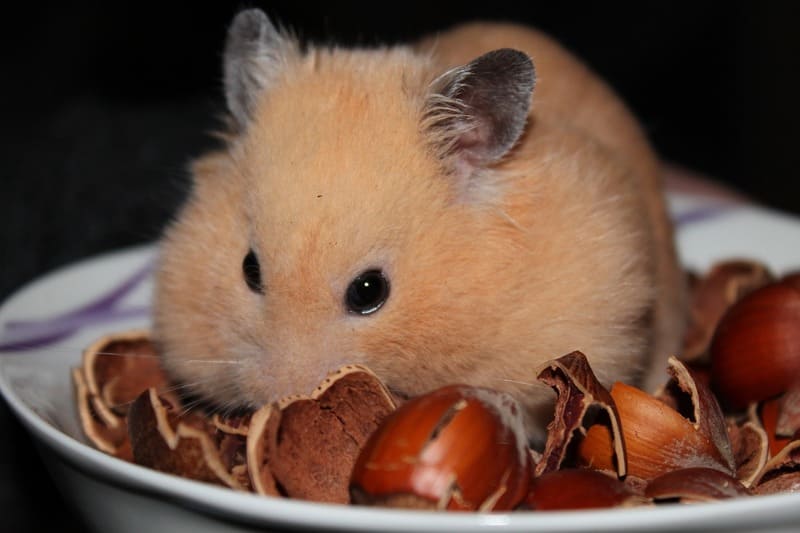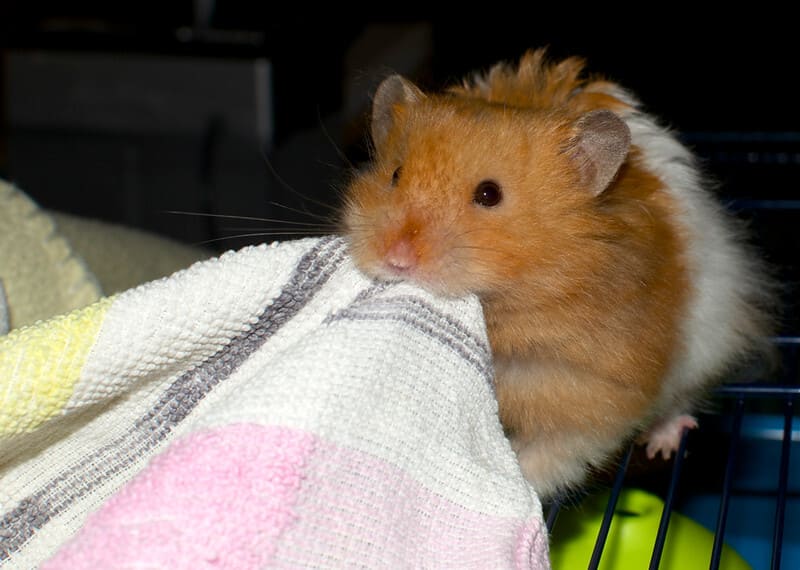Before delving into the topic of potty training, it’s important to understand these small, furry creatures. Hamsters are rodents that belong to the Cricetidae family. They are typically small, measuring around 4 to 7 inches in length and weighing between 1 to 7 ounces, depending on the species. The most common pet hamster species include Syrian hamsters (Mesocricetus auratus), Dwarf hamsters (Phodopus spp.), and Roborovski hamsters (Phodopus roborovskii).
Hamsters are known for their gentle and timid nature, making them popular pets for families and individuals alike. Their lifespan varies depending on the species.

The Challenge of Hamster Waste
Hamsters, like all animals, produce waste as a natural part of their biological functions. For hamster owners, managing this waste can be a significant concern. Hamsters typically urinate frequently, and their feces are small, pellet-like droppings. Since hamsters are typically kept in cages or enclosures, keeping these spaces clean is crucial for the pet’s health and hygiene. This leads to the question: can hamsters be potty trained?
The Basics of Potty Training
Potty training, also known as litter training, is a process of teaching an animal to use a specific area for urination and defecation. It is a common practice for larger pets like cats and dogs, and even some birds and rabbits. However, when it comes to hamsters, the process is less straightforward. Here are the basics of potty training for hamsters.
Factors Affecting Potty Training Success
Potty training a hamster is not guaranteed to be successful, and there are several factors that can influence the outcome. It’s important for hamster owners to consider these factors before attempting to train their pets.
1. Hamster Species
Different hamster species may have varying levels of success with potty training. Some species, like Syrian hamsters, are often easier to train due to their larger size and more predictable behavior. Dwarf hamsters, on the other hand, can be more challenging to train.
2. Age of the Hamster
The age at which you start potty training your hamster can impact the success of the training. Young hamsters are often more adaptable and may pick up on the training more quickly. Older hamsters might be set in their ways and less receptive to training.
3. Health and Stress Levels
A healthy and stress-free hamster is more likely to respond positively to potty training efforts. If your hamster is ill or stressed, they may not be as receptive to training. It’s essential to ensure your hamster’s well-being before attempting any training.
4. Consistency and Patience
Consistency is key when it comes to any form of pet training. Potty training a hamster requires patience and a regular routine. If you give up too quickly or change the training approach frequently, you may not achieve the desired results.
5. Training Accessories
Using the right training accessories is crucial. The choice of litter or bedding material, the type of potty training tray or corner, and the placement of these items in the enclosure all play a role in the training process.

Steps to Potty Training Your Hamster
Potty training a hamster may require time and effort, but it is possible with the right approach. Here are the steps you can follow to train your hamster to use a designated bathroom area.
1. Select the Right Potty Training Area
Choose a corner or a specific area in your hamster’s cage or enclosure where you want them to do their business. This area should be easily accessible to your hamster and away from their sleeping and eating spaces.
2. Choose the Appropriate Litter or Bedding Material
Hamsters have specific preferences when it comes to bedding materials. You can use materials like aspen shavings, paper-based bedding, or even sand for the designated potty area. It’s essential to use a different bedding material for the rest of the enclosure to help your hamster distinguish between the potty area and the rest of their living space.
3. Observe Your Hamster’s Habits
Before starting the training, spend some time observing your hamster’s natural habits. Take note of where they tend to urinate and defecate within their enclosure. This will give you a better idea of where to place the potty training area.
4. Introduce the Potty Area
Place the chosen bedding material in the designated potty area and ensure it’s clean and fresh. Add a small potty training tray or container, making sure it’s easily accessible for your hamster. You can also use a small dish or container as a makeshift potty. Be consistent with the location of the potty area.
5. Regularly Clean and Maintain the Potty Area
Hamsters are more likely to use a clean potty area. Remove waste from the designated potty area daily to keep it as clean as possible. This will encourage your hamster to continue using it for their bathroom needs.
6. Positive Reinforcement
When your hamster uses the designated potty area, provide positive reinforcement. You can do this by offering a small treat or a gentle pat on the head. Hamsters can learn to associate using the potty area with positive rewards.
7. Be Patient
Potty training may take time, and there will be accidents along the way. It’s essential to be patient and persistent. Don’t scold or punish your hamster for accidents; this can be counterproductive and cause stress.
8. Monitor Progress
Keep a close eye on your hamster’s progress. If you notice that they consistently use the designated potty area, you’re on the right track. If not, you may need to adjust the location or the type of bedding material you’re using.

Common Challenges and Solutions
Potty training hamsters can be a rewarding but challenging process. Here are some common challenges that hamster owners might encounter and how to address them.
1. Accidents Outside the Potty Area
It’s common for hamsters to have accidents outside the designated potty area, especially during the initial stages of training. To address this issue, you can expand the potty area or adjust its location based on your observations of your hamster’s behavior.
2. Inconsistent Use of the Potty Area
Some hamsters may be inconsistent in using the potty area. This can be due to stress, changes in their environment, or health issues. Ensure your hamster’s well-being and maintain a consistent routine to address this challenge.
3. Resisting the Potty Area
If your hamster refuses to use the designated potty area, it might be necessary to try a different bedding material or potty training container. Experiment with various options to see what works best for your hamster’s preferences.
4. Multiple Hamsters in One Enclosure
If you have multiple hamsters in one enclosure, potty training can be more challenging, as each hamster may have its own preferences. Consider providing separate potty areas for each hamster to reduce conflicts and make training more effective.
Tips for Successful Potty Training
To increase the chances of success in potty training your hamster, consider the following tips:
1. Start Early
If possible, start potty training when your hamster is still young. Young hamsters tend to adapt to new routines more quickly.
2. Maintain a Clean Environment
A clean and hygienic living space is essential for successful potty training. Regularly clean and maintain the designated potty area as well as the rest of the enclosure.
3. Use Positive Reinforcement
Hamsters respond well to positive reinforcement. Offer small treats or gentle praise when your hamster successfully uses the potty area.
4. Be Patient
Potty training can take time, and hamsters may have setbacks. Stay patient and persistent, and avoid punishing your hamster for accidents.
5. Adjust as Needed
If you notice that your initial training methods are not effective, be willing to adjust the location of the potty area, the type of bedding material, or the training container. Tailor the training to your hamster’s preferences.
Alternatives to Potty Training
While potty training is a feasible option for some hamster owners, it may not work for all hamsters or situations. There are alternative methods to manage your hamster’s waste if potty training doesn’t prove successful.
1. Regular Cleaning
If potty training isn’t working for your hamster, you can opt for more frequent cage cleaning. This involves cleaning the entire enclosure more regularly to keep it clean and odor-free. Make sure to replace the bedding material as needed.
2. Use of Litter Boxes
Some hamster owners have successfully used litter boxes designed for small animals. These can be placed in the enclosure, and if the hamster takes to using it, it can make waste management easier.
3. Cage Design
Consider the design of your hamster’s enclosure. Some cages come with multiple levels or separate sections that can help keep the sleeping and eating areas separate from the potty area. This can minimize the need for extensive potty training.
Conclusion
Potty training a hamster can be a challenging yet rewarding endeavor. While it is possible, it’s important to remember that not all hamsters will take to potty training, and success can vary depending on factors like the hamster’s species, age, health, and individual temperament. Patience and consistency are key when attempting to potty train your hamster.
If potty training proves to be unsuccessful or too challenging, there are alternative methods for managing your hamster’s waste, such as more frequent cage cleaning, the use of litter boxes, and thoughtful cage design. Ultimately, the well-being and comfort of your pet hamster should be the top priority, and waste management methods should be chosen with your hamster’s needs in mind.
Regardless of the method you choose, providing a clean and hygienic living space for your hamster is essential for their health and happiness. So, whether you successfully potty train your hamster or not, the love and care you provide will make all the difference in your furry friend’s life.
